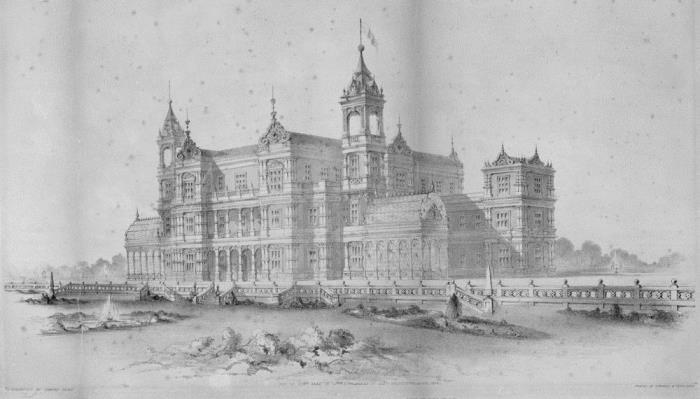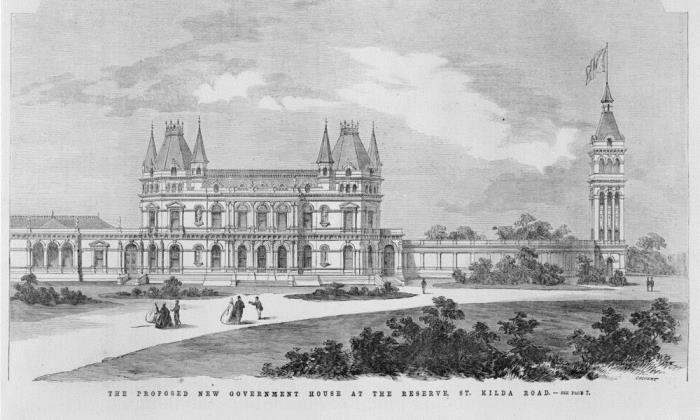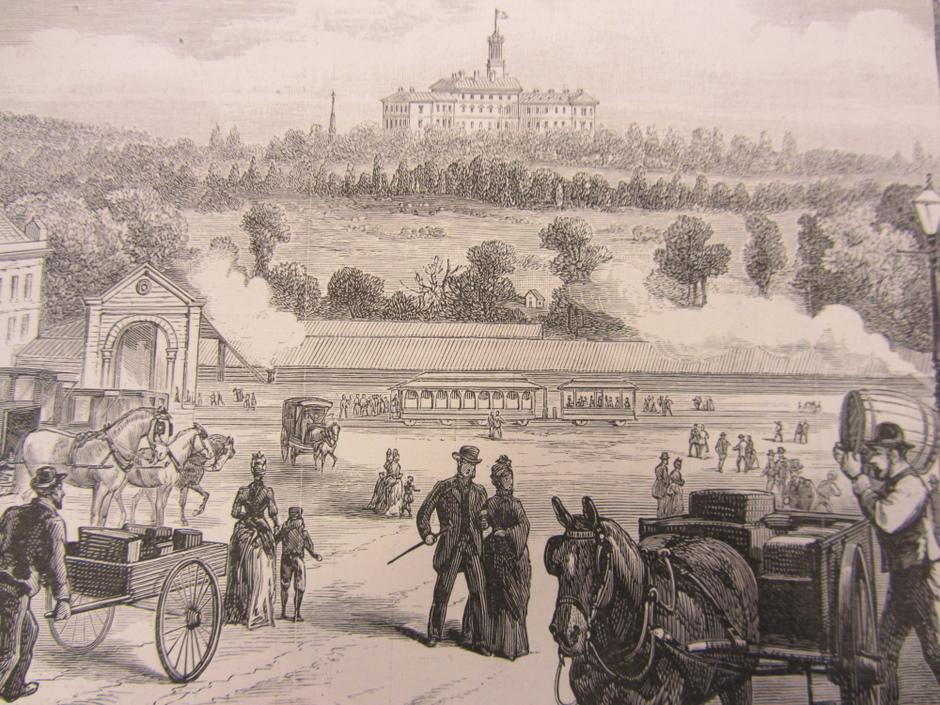Heritage-listed Government House in Victoria is one of Australia’s largest and most beautiful houses, however the design was controversial when built
Heritage significance
Victoria’s Government House, built between 1872 and 1876, is listed on the Victorian Heritage Register and is recognised for having historical, architectural and aesthetic significance to the State.
Government House is ‘one of the largest and most beautiful mansion houses in Australia’ and is considered to be one of the finest examples of 19th-century residential architecture, according to the Victorian Heritage Register.
Built during the economic boom of the Gold Rush when Melbourne was transformed from a small capital in a fledgling colony into ‘Marvellous Melbourne’, Government House characterises the high standard of design and craftsmanship of public buildings built during that period.
Designed in the Italianate-style, the House is constructed in stucco-rendered brick on a bluestone foundation. The tower provides a central focus for the three sections of the house – the State Apartments(opens in a new window), the Private Apartments and the Ballroom.
Scale of the House
On 4 October 1876, Victorian Governor Sir George Bowen(opens in a new window) wrote to the Secretary of State for the Colonies that the House was completed:
'This is by far the largest Government House in any colony; indeed it is – as I am informed – twice as large as the residence of the Lord Lieutenant at Dublin.'
It remains the largest residential building in Australia:
- The Government House complex including outbuildings has about 240 rooms
- The main building is about 3,035 square metres
- The State Ballroom is longer than the one at Buckingham Palace
- The State Dining Room table is almost the length of a cricket pitch and seats 54 people
- The tower is 44m high, excluding the flagpole which is 13.7m
Building Government House
Government House design competition
The Government House we have today was the third attempt by the Colonial Government at commissioning a design.
Government House, Victoria, could have been an Elizabethan-style building, as per the winning entry in an 1853 design competition won by J. G Knight and Kemp, which was ultimately considered too costly to build.
It could also have been a French Baronial style building, as per the winner of another design competition held in 1864, and designed by Melbourne architectural practice Reed and Barnes. However, the estimated cost of £45,000 to build was too expensive.
Design
Several early visions for a purpose-built Government House Victoria were not progressed. In 1871, under the supervision of William Wardell(opens in a new window), Inspector General of the Public Works Department, a final design was undertaken by John James 'JJ' Clark(opens in a new window), an architect skilled in the classical style.
There were high hopes for the building, as expressed in The Argus newspaper in 1872:
'The erection of a handsome building will do much to improve the seaward aspect of the city, by filling up what at present may be regarded as an awkward blank, and by crowning an unoccupied eminence with an appropriate structure'.
In addition to Government House, JJ Clark also designed Melbourne's Old Treasury Building, whilst another notable architect of the time, Peter Kerr(opens in a new window), who also worked under the direction of Wardell, designed Victoria's Parliament House. Wardell was himself the designer of St Patrick's Catholic Cathedral in East Melbourne, St John's Church of England, Toorak, and the Gothic Bank on the corner of Collins and Queen Streets.
In colonial times, the stench from the Yarra River resulted in the capital of Victoria being known as 'Smelbourne.' Governor Normanby complained in 1881 that the stench was so bad it meant none of the windows at Government House could be opened. The river was polluted by open drains from the city, run-off from the knackers yards and boiling down establishments.
Construction
The construction contract was awarded to the firm, Martin and Peacock. However, the construction took longer than expected.
As the build was nearing completion, The Weekly Times noted:
'In a very short time the palatial edifice which has risen almost ghoul-like before the eyes of Melbourne will be fairly utilised. So slow was its growth, and so long has it stood in solitary magnificence, that the term Government-house became almost a misnomer, and people wondered in what far-off age its vast dimensions would be called into requisition.'
In total, the construction of Government House and purchase of furnishings cost the colony £200,000.
Reaction to the House
On completion, The Age was scathing of its design, describing the building in April 1876 as a ‘huge pile, bald and plain to downright ugliness' and adding:
‘There are of course some embellishments in the shape of balustrades, Corinthian columns and pilasters of miniature proportions, modillions, dentils, mouldings, but the combined effect of the groupings on the great haystack pile is barren and frigid in the extreme …'
‘With such a site and such a sum of money, a less imposing effect could not have been produced.’
While acknowledging that the Ballroom and other State rooms had been decorated in an ornate and tasteful manner, it said:
‘The labyrinth of Crete could not be more confusing, and for vastness it might be the residence of all the Governors of all the colonies.’
The Argus also reported on the house, noting:
‘The shell may be a trifle rough, but the kernel is a sweet one. To the stranger the interior of Government House is one series of surprises.’
It praised the 'superb' entrance hall, staircases ‘rich in the wealth of the ironworker’s art’, windows of ‘exquisitely frosted glass', and 'massive gasoliers to shed a more brilliant lustre at night.'
Find out more about the history of Government House - how it was used as a girls' school, and was a depot for the Red Cross During World Wars I and II.(opens in a new window)
There have also been other houses that have served as the Vice-Regal residence in Victoria including Toorak House and Stonnington Mansion in Malvern.
Updated



